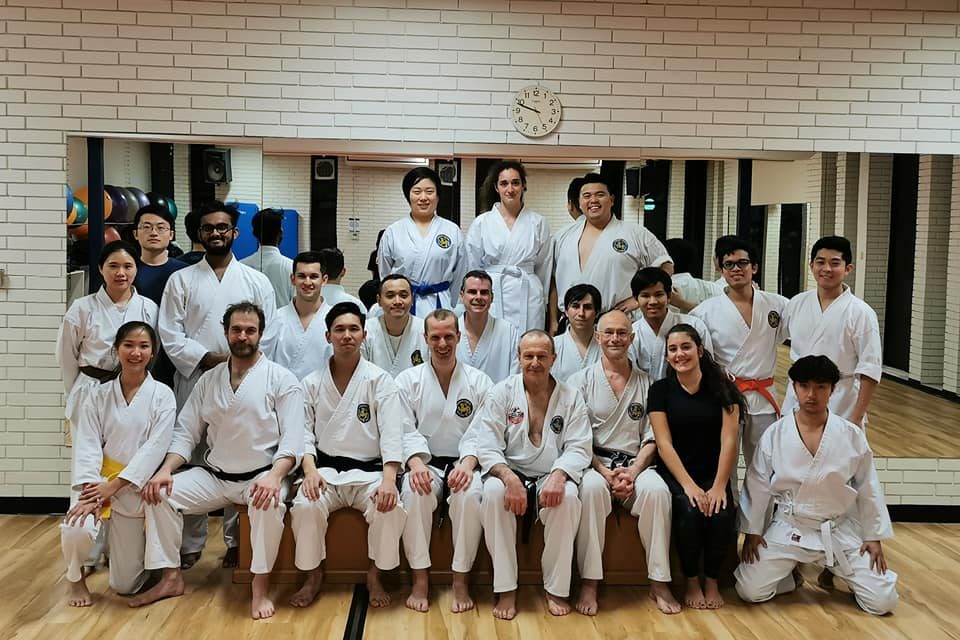Club’s goal:
If becoming proficient in self-defence was the only goal of karate it would have minimal worth. Self-defence training is a martial training but that does not necessarily make it a martial art. In a martial art, attaining proficiency in self defence is merely the path to a goal that is more important and more difficult to achieve. That goal is improvement of character and respect and consideration for others. Melbourne University Karate Club Inc. practises a martial art.
Club’s approach: The Club endeavours to take a balanced approach to all the elements of karate. Those elements include –
- Self-defence.
- Sparring
- Fitness.
- Yoga.
- Stamina.
- Meditation.
Balance is important because the emphasis students place on the different elements of martial arts changes with time. A balanced approach gives members the opportunity to explore different aspects of the art as their martial arts knowledge increases.
What happens in a training session:
-
- Exercises to develop flexibility, strength and physical fitness (both aerobic and anaerobic). The exercises include yoga and tai chi type forms.
- Repetition of techniques (punches, kicks, blocks etc.) with appropriate power, co-ordination and mental attitude.
- Kata – set fighting sequences with imaginary opponents.
- Set movements with partners of attack and defence (including grappling, take downs, throws and locks).
- Bo (Okinawan staff) and escrima sticks –to improve co-ordination and technique.
- Free sparring. The objective of free sparring at the Club is not to beat or harm the sparring partner. The objective is to improve fluidity, timing and distance in executing techniques and to assist the sparring partner to do so also. Blows are pulled or controlled to ensure safety. Students do not participate in free sparring until they have attained an adequate level of proficiency to do so with control and without adversely affecting technique.
- Grappling and throwing on mats.
Club history and style:
The Club was founded in 1968. This makes it one of the oldest karate clubs in Australia. It trains in a style that is based mainly on the Shuri-te (Okinawan)/Shotokan (Japanese) karate style. It also incorporates aspects of other styles, in particular ba gua (Chinese martial art) and savate (French kick boxing).
Training atmosphere:
The atmosphere is focused, but being a university club, it is less formal and is more social than most martial arts clubs.
Members:
Members come from a wide range of backgrounds – from first year students to members of staff, lecturers and graduates to people outside the university. All are welcome.
